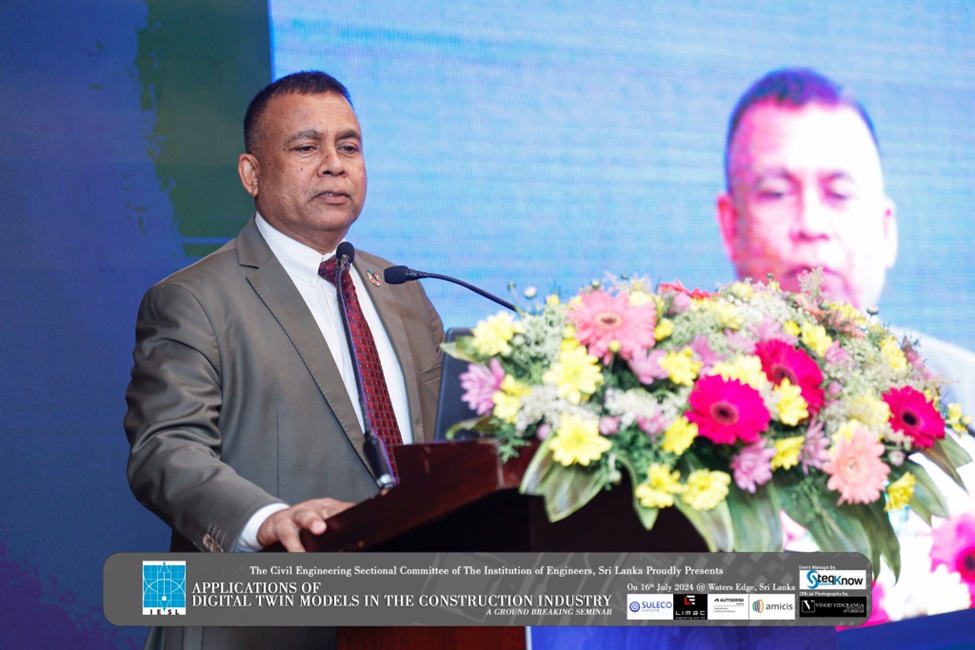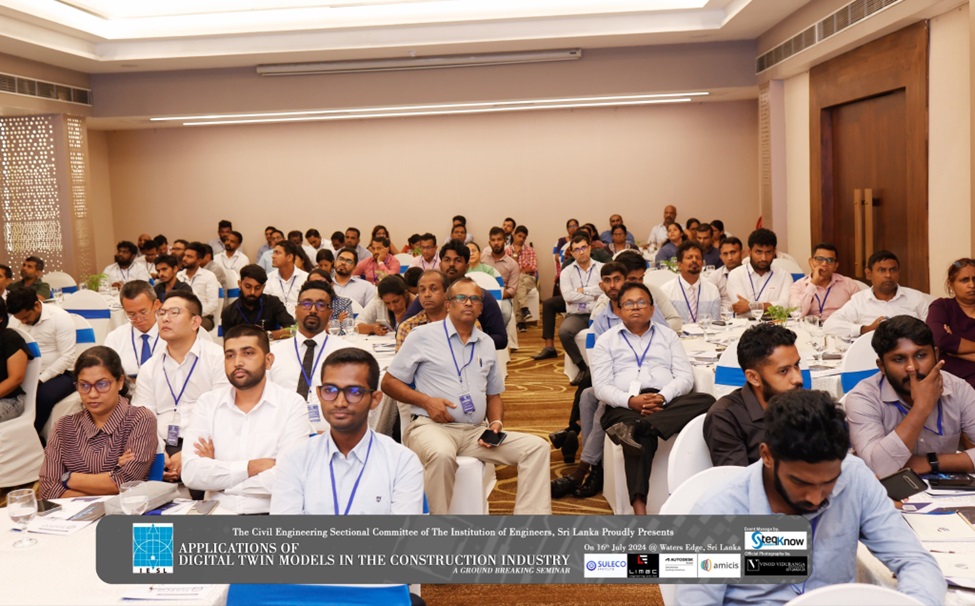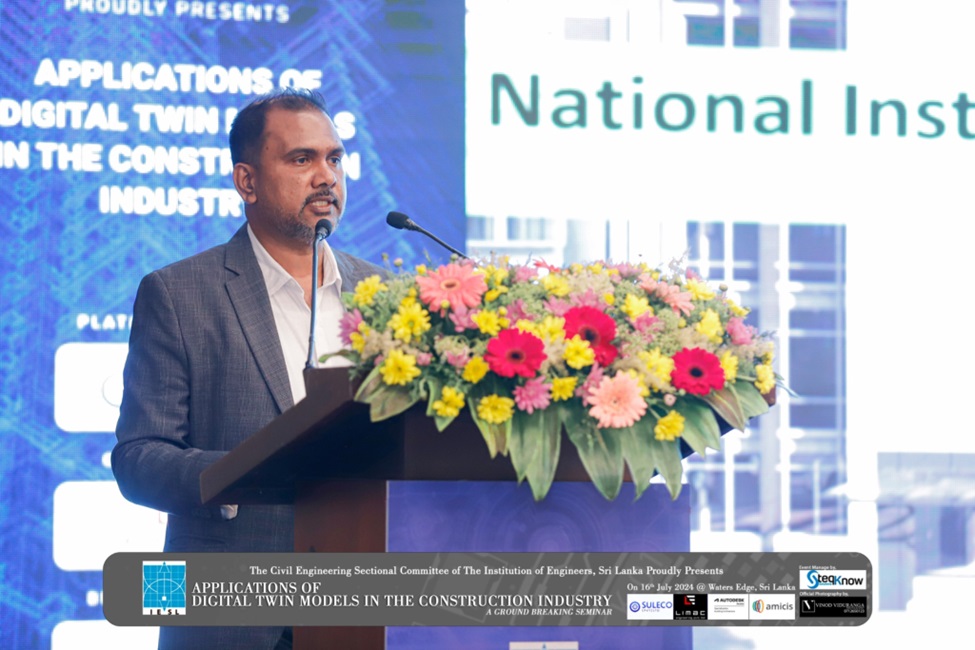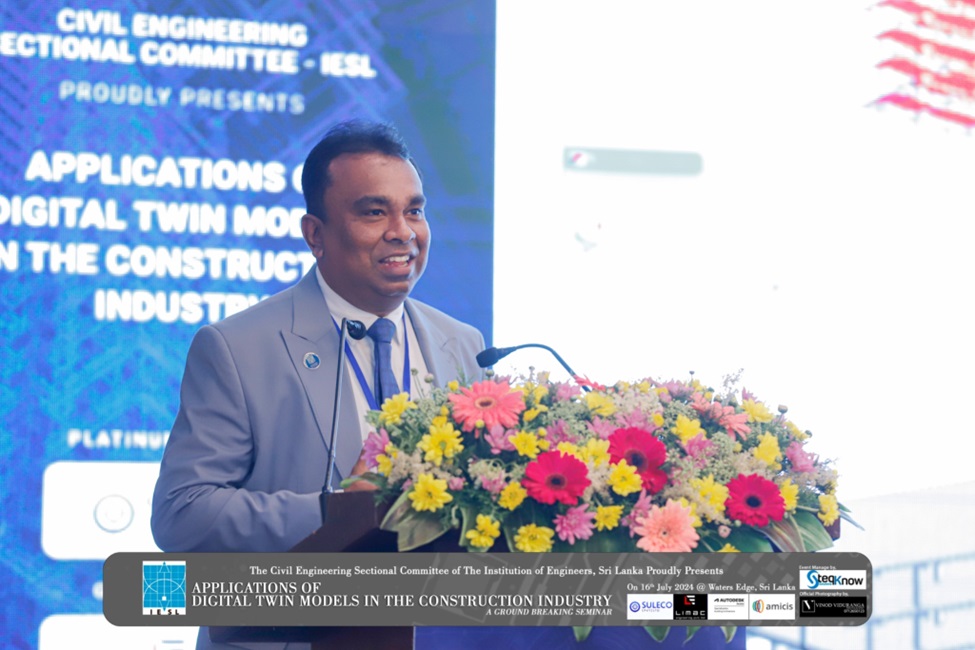IESL Seminar Sheds Light on Digital Twin Models in the Construction Industry
By PUBLICITY DIVISION (IESL)
Colombo, July 16, 2024 – The Civil Engineering Sectional Committee of the Institution of Engineers, Sri Lanka (IESL) successfully organized a seminar on “Applications of Digital Twin Models in the Construction Industry” at Waters Edge, starting at 8:30 AM. The event attracted a large audience of civil engineers, industry professionals, and academics, eager to explore the transformative potential of digital twin technology in the construction sector.
Digital twin technology, which creates virtual replicas of physical assets, systems, or processes, is rapidly gaining attention for its ability to revolutionize the construction industry. By using real-time data and advanced simulations, digital twins enable better decision-making, improved project management, and enhanced operational efficiency throughout the lifecycle of a building or infrastructure project.

What is a Digital Twin?
A digital twin is a dynamic virtual model that accurately reflects the physical characteristics, conditions, and behavior of real-world objects and systems. In construction, this means creating a virtual counterpart of a building or infrastructure project, which is continuously updated with data collected from the actual site.
Through the integration of sensors, IoT (Internet of Things) devices, and data analytics, digital twin models provide real-time feedback, enabling project managers and engineers to monitor, predict, and optimize the construction process. This technology has applications in design, construction, maintenance, and even post-completion operations.
Importance of Digital Twin Modeling in Construction
At the seminar, industry experts emphasized the importance of digital twin modeling as a tool that offers significant advantages over traditional methods of managing construction projects. Some of the key benefits highlighted include:
- Enhanced Decision-Making:
Digital twins allow construction teams to simulate different scenarios, making it easier to predict the impact of design changes or operational decisions. By visualizing real-time data, project stakeholders can make more informed choices, reducing errors and minimizing costly delays. - Improved Efficiency:
Digital twin models enable better coordination between teams, contractors, and suppliers. Real-time data from the construction site can be monitored and shared seamlessly, allowing for quicker adjustments and more efficient resource management. This results in faster project completion and lower costs. - Risk Reduction:
By simulating potential risks and failures before they occur, digital twin technology helps identify problems early in the construction process. This enables proactive risk management, improving safety on-site and ensuring the long-term resilience of buildings and infrastructure. - Sustainability and Lifecycle Management:
Digital twins are also key in promoting sustainability within construction projects. By continuously monitoring energy consumption, structural integrity, and other factors, digital twins can assist in optimizing building performance over time, ensuring that maintenance is carried out as needed and reducing the environmental impact of operations.

A Future of Smarter Construction
The seminar underscored that digital twin technology is part of the broader move toward smart construction and the adoption of Industry 4.0 technologies. With artificial intelligence (AI) and machine learning playing an increasing role in digital twin models, the construction industry can expect to see more accurate predictive analytics and automated decision-making processes in the near future.
Speaking at the seminar, experts noted that digital twin technology is still in its early stages in Sri Lanka. However, global trends show that it is becoming a cornerstone of modern construction practices in developed countries. By embracing digital twin models, Sri Lanka’s construction sector can enhance its competitiveness, achieve greater precision, and deliver more sustainable infrastructure projects.
As Sri Lanka continues to modernize its infrastructure, adopting new technologies like digital twin modeling will be crucial for the construction industry to thrive. The IESL’s seminar provided a valuable platform for industry leaders to exchange ideas and learn about the potential of digital twins, marking a significant step toward future-proofing the nation’s construction practices.
The IESL Civil Engineering Sectional Committee is committed to further exploring the possibilities of digital transformation in the construction sector, empowering engineers to adopt innovative solutions and stay ahead in a rapidly evolving industry.
Speakers at the event
Case Study 1-What is a Digital Twin & How to Apply for New Building Projects by Eng.Udara Perera, Archt. Sandun, Eng. Mangala Silva, Eng Prasanna Narangoda








